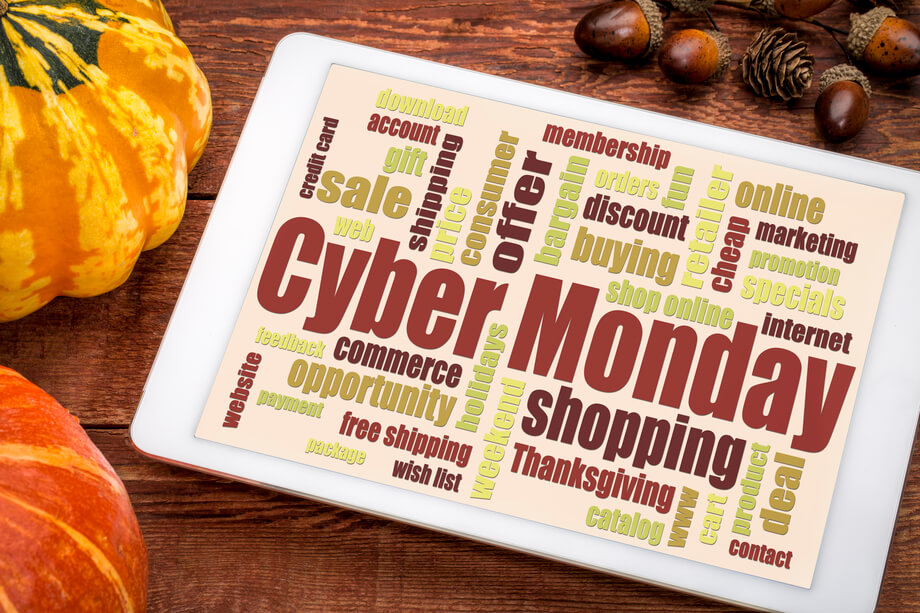This article benefited from a survey to our readers. Thank you for your continued support. Surveys result in Tips of the Week.
Theft in retail stores is an enormous problem, as determined shoplifters can be quite skilled and hard to catch. Just how hard is it to stop them? An infographic produced by www.pricegun.com (http://bit.ly/pricegun-infographic) states that “on average, shoplifters are caught only 1 in 48 times.”
Given the amount of money that’s at stake, store owners should regularly evaluate the effectiveness of their policies and security systems and update them as needed. Fortunately, security technology is constantly improving, and some options that were out of reach a few years ago are more affordable now, so this may be a good time to switch or upgrade your security system.
We’ve done research on security options and best practices to help you stay abreast of trends. We have limited the focus to physical security, however, and excluded cybersecurity breaches and return fraud, as these topics are outside the scope of this article.
Evaluate Your Security Status
Some security system companies offer a no-cost, no-obligation security evaluation to help identify weaknesses and vulnerabilities. You can also ask your local police department for advice as well. Consider teaming up with your Chamber of Commerce and other businesses in your area to request a group training session from law enforcement. Share observations and experiences with other business owners in the area to identify crime patterns. To be forewarned is to be forearmed.
Provide Employees With Security Policies and Training
Make sure you have detailed, written security policies in place for your employees and enforce them. Design the policies to prevent both customer and employee theft.
The following PDF from Retail Excellence Ireland (https://www.scribd.com/document/413552854/REI-Guide-to-Loss-Prevention-pdf) is an excellent, detailed source of information on security policies, theft prevention training, and common shoplifting strategies to watch for. While the document was written for Irish retailers, the information is just as applicable to North American stores.
A Police Officer’s Perspective
“One of the greatest weaknesses in small retail security is a good quality surveillance system,” said Officer Bret Rodenz of the Waupaca Police Department in Waupaca, Wisconsin. Camera placement is also important. “If you are installing cameras yourself, ask your local law enforcement department for recommendations on placement of the cameras and specific lighting in the areas the cameras are installed.” Video is only helpful if a suspect can be identified, so consider adding a high-quality camera at the store entrance. “Not all customers plan on stealing when they first enter the store and don’t think to cover their face or other identifying features at that time,” he explained.
Rodenz recommended using motion-activated video systems to increase recording capacity. “Most systems record on a loop system and will record over the oldest recordings after a period of time. By having a system that records on motion, it gives you a longer lookback period of time. This also helps in locating a potential suspect. Instead of watching hours of video with nothing on it, you can watch the video when there is only activity in the area. You should also make a habit of making sure your video surveillance is recording. There have been numerous times when we respond to a call and later find out the video recording was not working.”
Best Practices
- Develop a “zero tolerance” reputation. Apply the “broken window” theory of justice by pressing charges for all theft to send a strong message of deterrence.
- Stay up-to-date with local, state, and federal laws to make sure you know how to fully enforce your rights while staying within legal bounds. Violating a suspected shoplifter’s rights could be even more costly than the theft.
- Keep shelving low to maintain visibility throughout the store.
- Ensure your store has complete 360° high-resolution video camera coverage. In the past, video images tended to be grainy, but current technology produces sharp images that can more easily be used to identify thieves. Also the better the clarity, the more likely the footage can be successfully used in court to prosecute offenders. Include coverage of the exterior and parking areas.
- Be aware that if your security system operates through your phone line rather than wirelessly, it may be vulnerable to a break-in in which the criminal cuts the phone line before entering the store to disable the system.
- Minimize the number of employees who have keys and unsupervised access to money and sensitive information. This will reduce risk by increasing accountability and narrowing suspects.
- Install a bell or buzzer at your front entrance to signal when customers enter and leave. Shoplifters want to remain invisible. When their presence is announced, they know that you know they’re there.
- Keep merchandise displayed neatly. “If your store is messy, disorganized, or a maze to get through, it can be harder to notice that you’ve been ‘gotten’ until it’s too late,” said Humayun Khan in “5 Quick and Low-Tech Tips To Prevent Shoplifting in Your Retail Store” posted on Shopify.com. Khan also warned retailers to watch out for price tag switching and shoppers with items like strollers, large handbags, and umbrellas, all of which can be used to hide merchandise. You may want to institute a policy in which items like this must be left at the checkout while shopping. Khan suggested using shoplifting signs that incorporate eyes, as this has been shown to double their effectiveness. He also recommended mounting the signs up high where potential shoplifters will be looking for security cameras.
- Be alert and carefully watch those who are suspicious. Give them great customer service, asking if you can help them, to let them know in a friendly way that you’re paying close attention.
- Watch for shoppers exhibiting suspicious behavior, such as nervousness, picking up and putting down random items with no apparent interest in them, and watching store employees more than looking at merchandise.
- Be especially alert during peak shoplifting times, which are typically the busiest shopping periods. Thieves know that they have a better chance of blending in then. According to Nicole Waters’ blog article “25 Ways to Prevent Shoplifting in Your Retail Store” posted on Shopkeep.com, “Wednesday through Saturday are the most popular days for shoplifters, especially in the afternoon and on weekends. Summers and holidays are often high-alert times for theft as well.”
- Don’t be fooled by stereotypes. Some prolific shoplifters are well-dressed and don’t actually need the money. They’re stealing for psychological reasons more than for the money.
- Never leave a cash register unattended.
- Rely on your POS system to help you identify discrepancies between actual inventory and what’s been reported as sold.
Security System Features and Options
This list will help you become familiar with what’s available, determine which features you do and don’t need, and make it easier to compare and contrast systems.
- Video camera features: cloud storage; two-way audio; wide-angle lens; tilt / pan / zoom functions; motion-activated recording; and infrared capability for night surveillance
- Burglar alarm
- Intrusion detection
- Glassbreak detection
- Motion sensor
- Remote security monitoring and control
- Smoke detection and notification
- Carbon monoxide detection and notification
- Freeze and flood damage detection and notification
- Digital door key cards
- Electronic access control / tracking by employee and time, integrated with time and attendance
If you need a new or upgraded security system, review our Security System Evaluation Checklist (https://smart-retailer.com/security-system-evaluation-checklist) which will help you ask the right questions so you purchase the system that best fits your needs.
Other Security Measures
- Lighting: Make sure all areas of the store, inside and out, are well lit.
- Mirrors: Corner ceiling mirrors are inexpensive, help eliminate blind spots, and provide excellent deterrence.
- RFID / security tag systems: RFID or other security tag systems may be cost effective if the store carries a large amount of valuable merchandise
- Warning Signs: Shoplifting warning signs are an excellent, low-cost way to deter shoplifters.
- Employee Background Checks and Thorough Interviews: These are invaluable tools, but be sure to comply with all laws.
A small business can easily be driven out of business by excessive shrinkage, so storeowners must stay vigilant. Unfortunately, criminals are always finding new ways to circumvent security. In order to stay a step ahead of them, you’ll need to regularly monitor losses and review policies and technology to keep shoplifting and employee theft and fraud under control. It can be done, but it requires a proactive rather than reactive approach.









